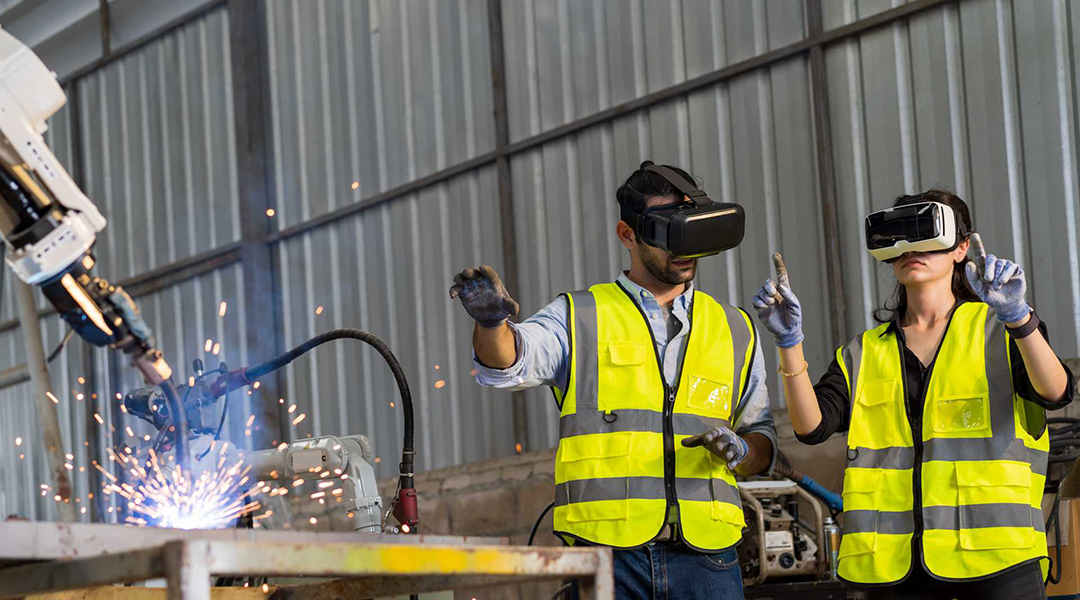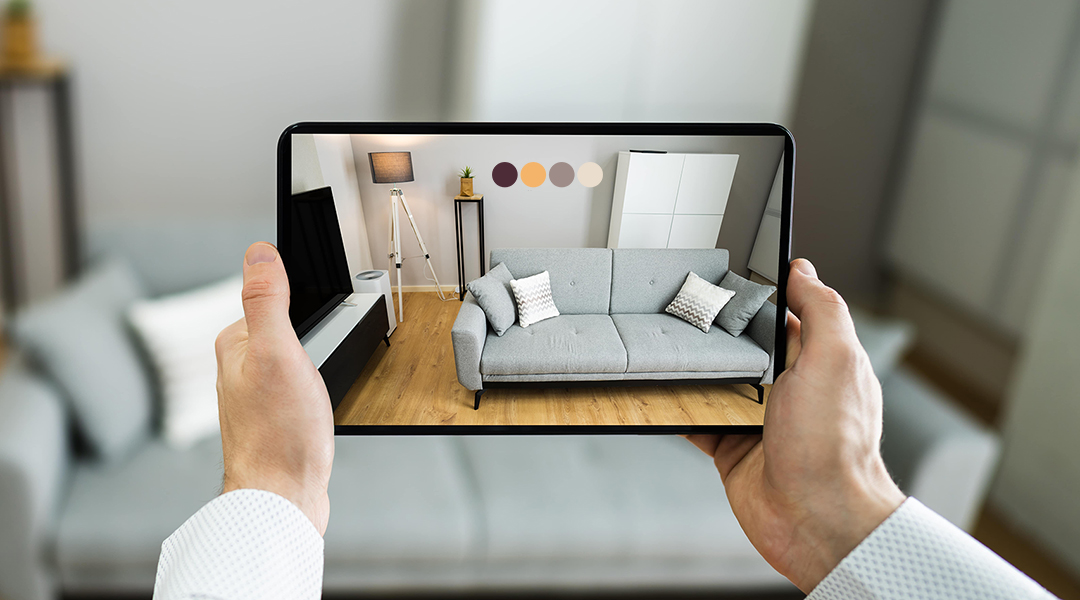In this article, we will examine the impact of VR in marketing, ways you can make VR part of your marketing strategy, and even give some guidance on finding a VR app development company.
The evolution of marketing strategies has led to the incorporation of cutting-edge technology to captivate audiences with unprecedented experiences. Central to this technological revolution is the use of virtual reality (VR), which has emerged as an essential tool in engaging and delivering innovative content to consumers. VR's unique capability to create immersive environments makes it an ideal platform for marketers to distinguish their campaigns in a highly competitive environment.
Initially perceived as a medium primarily for gaming and entertainment, virtual reality has significantly expanded its horizons, showcasing its versatility across various sectors. As of 2024, it is anticipated that businesses will constitute a majority of the virtual reality user base, accounting for approximately two-thirds. Among these applications, marketing is rapidly becoming a prominent area of focus, leveraging the immersive nature of VR to create compelling brand experiences.
This article aims to explore the profound influence of VR in marketing, highlighting how businesses can integrate VR into their marketing strategies effectively. Additionally, it offers practical advice on selecting a VR app development company, ensuring that companies can harness the power of VR to elevate their marketing efforts. Through this exploration, readers will gain insights into the transformative role of VR in marketing, illustrated with real-world examples and actionable strategies.
What Is Virtual Reality?
Virtual reality represents a technological frontier where immersive digital environments are accessible through VR headsets or multi-projected environments. This technology creates simulated experiences that can be similar to or entirely different from the real world. VR's application extends to various sectors, including entertainment, education, healthcare, and, notably, marketing.
In the context of marketing, VR offers an innovative avenue for brands to engage with their audience. Here's how VR is revolutionizing marketing:
Immersive experiences. VR allows brands to create fully immersive experiences, enabling consumers to interact with products or services in a simulated environment. This deep engagement fosters a stronger connection between the consumer and the brand.
Enhanced storytelling. VR provides marketers with a unique storytelling platform. Through VR, brands can craft compelling narratives that envelop consumers, making the marketing message more impactful.
Personalized interactions. VR technology can tailor experiences to individual users, heightening the relevance and effectiveness of marketing campaigns.
Incorporating VR into marketing strategies, known as VR marketing, has shown substantial effectiveness in captivating audiences. For instance, in VR advertising, brands can create interactive ads that are more engaging than traditional media. The interactivity of VR ads increases consumer engagement and retention rates.
One notable area is virtual reality digital marketing, where digital campaigns are enhanced through the immersive capabilities of VR. Such an approach offers a novel way for brands to interact with their digital audience, making marketing campaigns more memorable and impactful.
Virtual reality in marketing is not just a concept; it is a rapidly growing trend with numerous successful VR marketing examples. For instance, real estate companies use VR to offer virtual tours of properties, providing a realistic experience of the space without physical presence. Retail brands leverage VR to allow customers to try on clothes or preview products in a virtual space.
In summary, VR in marketing is a dynamic tool that offers:
- a unique medium for delivering marketing content;
- the ability to create memorable, immersive brand experiences;
- enhanced consumer engagement through interactive and personalized content.
As VR technology continues to evolve, its application in marketing is likely to become more prevalent, offering brands innovative ways to connect with their audience. The potential of VR in marketing is vast, and it's an exciting time for marketers to explore this technology's capabilities.
What Are the Pros and Cons of Using VR for Marketing?
Virtual reality, like any technological tool, comes with its unique set of strengths and limitations. These characteristics must be carefully considered before integrating VR into your marketing campaign. Understanding both the advantages and drawbacks of virtual reality is crucial in harnessing its full potential for marketing purposes.
The integration of VR in marketing presents a spectrum of opportunities and challenges. On one hand, VR offers an immersive experience that can significantly enhance customer engagement and brand interaction. On the other hand, technical limitations and accessibility issues may pose challenges. Marketers need to weigh these factors to utilize VR in their strategies effectively.
Considering the dynamic nature of VR marketing, it's important to assess how virtual reality aligns with your marketing objectives. VR's immersive quality provides a unique storytelling and customer engagement platform, making it an attractive tool for innovative marketing campaigns. However, the success of VR in marketing also depends on factors like target audience compatibility and the technical feasibility of implementing VR solutions.
To illustrate the practical application of VR in marketing, let's look at some VR marketing examples. Brands in the fashion industry are using VR to offer virtual fitting rooms, allowing customers to try on clothes virtually. In the real estate sector, VR is used to provide virtual tours of properties, offering a realistic experience without the need for physical presence. These examples demonstrate the versatility of VR in creating engaging and interactive marketing experiences.
So while virtual reality offers a wide array of possibilities for innovative marketing, it is vital to analyze its applicability to your specific marketing needs carefully. The decision to incorporate VR into your marketing strategy should be based on a thorough understanding of its capabilities and limitations, ensuring that it complements and enhances your marketing objectives.
Benefits of VR marketing
Impresses users and clients
VR, with its flashy appeal, is a potent tool in marketing. Its immersive technology captivates people, who are often eager to explore new gadgets, setting a positive tone for VR marketing experiences. This makes it easier to impress and imprint your product or service in their memory, leveraging the power of virtual reality.
Facilitates better engagement between a user and product
Handling an item in VR is a superb approach to understanding its functionality, making an immersive VR app almost as effective as the actual item in educating clients about your offerings. Moreover, by crafting a VR experience that's both enjoyable and engaging, you can establish an emotional connection between the user and the product, enhancing VR marketing strategy.
Easy to deploy campaigns
Delivering a VR marketing experience requires only an application and a headset, especially for in-person interactions at events or company premises. The app, pivotal in VR in marketing, can also be offered online, allowing VR users to download and engage with it remotely.
Reduces the workload of sales teams
Besides showcasing a product/service through VR marketing, you can also utilize virtual reality as a sales tool, allowing clients to quickly transition from examining and learning about a product in VR to ordering it. This practical VR in marketing approach can significantly reduce the volume of inquiries to sales reps.
Challenges of VR marketing
Difficult to create shared experiences
Most VR apps, integral to VR marketing, are designed for individual use, as crafting shared virtual reality experiences is more complex and time-consuming. However, this challenge can be addressed by developing multi-user VR apps, essential in VR in marketing, accessible to anyone with a headset, whether locally or via the internet.
Unique development needs
VR software development, a key aspect of virtual reality in marketing, remains a relatively new field, with many companies lacking in-house developers familiar with VR technology. Consequently, these companies often need to engage specialists for VR app development or collaborate with a proficient VR marketing studio or company throughout the project's duration.
Learn more about hiring VR developers
The future of VR in marketing
Virtual reality is poised for significant growth in the marketing field, driven by several key factors. The increasing adoption of VR headsets is a primary catalyst, with sales projected to rise to 29 million units per year from the current 8 million. This surge in VR headset usage indicates a growing consumer interest in virtual experiences.
Additionally, the rise of ‘metaverses’ by various companies utilizing immersive technology signals a burgeoning demand for VR experiences. These virtual spaces are becoming increasingly popular as platforms for marketing and user engagement.
Another critical factor in VR's growing prominence in marketing is the role of trendsetting brands and large enterprises. These organizations are increasingly adopting VR marketing strategies, setting an example for smaller companies. The fear of falling behind in an ever-competitive market is driving businesses to innovate through new technologies like VR.
Later in this article, we will explore VR marketing examples of how these trendsetting brands are harnessing virtual reality to create groundbreaking marketing campaigns. Their strategies illustrate the potential of VR in marketing and its ability to revolutionize how companies interact with their customers.
Virtual reality's future in marketing looks exceptionally bright. The steady increase in VR headset adoption coupled with the launch of company-specific metaverses are key indicators of VR's growing role in consumer engagement.
Furthermore, the influence of large brands adopting VR marketing techniques demonstrates the technology's effectiveness and sets a precedent for others in the industry. By embracing VR, companies can stay competitive and offer unique, immersive experiences to their customers, a trend that is quickly becoming the new standard in marketing.
How You Can Use VR in Marketing
Immersive experiences, enabled by diverse applications in virtual reality, are adaptable for a myriad of VR target markets. An excellent use case is employing VR in B2B marketing, showcasing how VR can enhance traditional marketing methods. These VR applications, from virtual product demonstrations to interactive environments, provide an innovative edge in VR marketing, effectively engaging various business sectors. For instance, VR marketing examples in B2B settings often include:
- virtual showrooms;
- offering an immersive, detailed view of products;
- revolutionizing marketing strategies in the virtual domain.e
Let’s get into the details with the most common ways to use VR in marketing being:
Showroom & Simulation
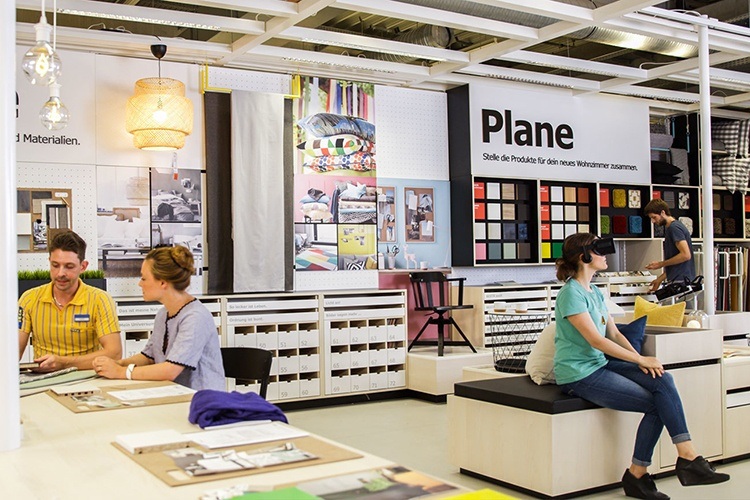
This is the most common use — an experience that allows users to see a product, object, or location up close (and from different angles), interact with it, and sometimes even modify it (product configurators).
Branded games
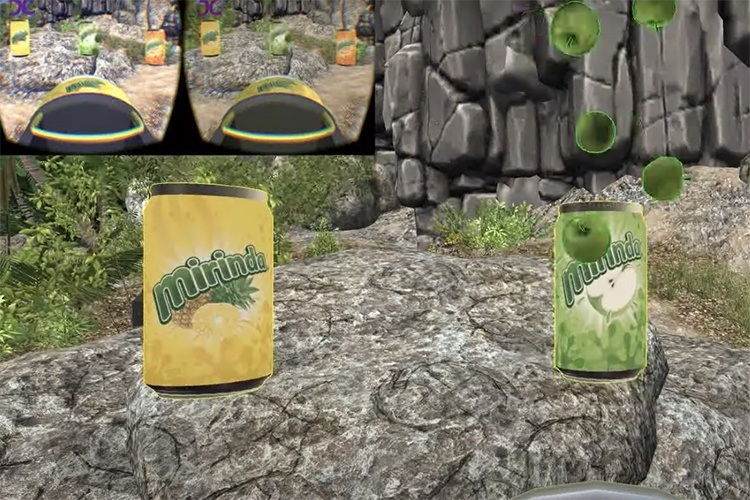
Branded games can be very effective at raising your brand awareness and familiarizing customers with your product in a fun and pressure-free way. As users focus on gameplay, they are exposed to content representing a company and its products.
Content marketing

VR in content marketing is effective because the technology happens to be one of the best visualization tools available. 3D models, images, animation, and even text become much more interesting and understandable when you present them in a headset.
Virtual events
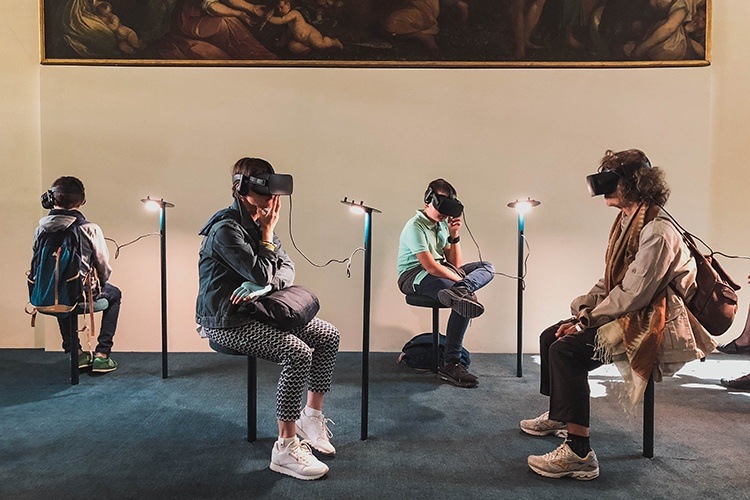
A very practical solution in our current era of social distancing. Holding virtual events has become commonplace, with users in any location being able to put on a headset, walk around a digital event hall, see speakers and presentations, and interact with other people (via their avatars).
Market research
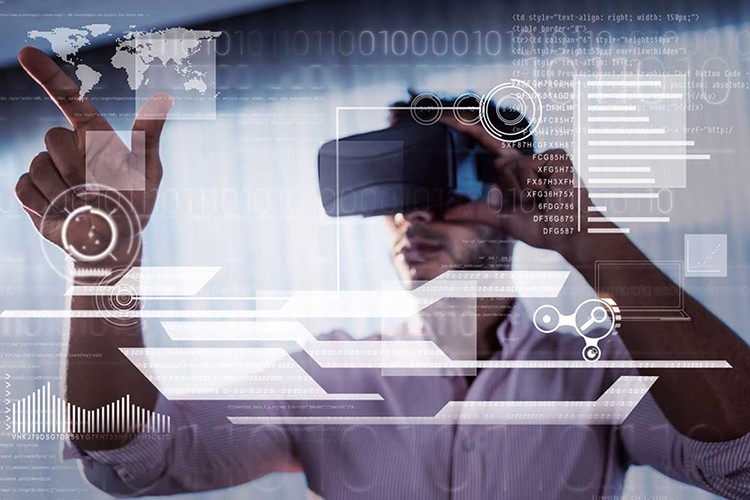
This is a bit of an indirect use, since collecting information from users is not the primary purpose of most VR apps. Nevertheless, the behaviors and choices made by users in these apps can be easily tracked and provide valuable insights into a business’s clientele.
VR Advertising
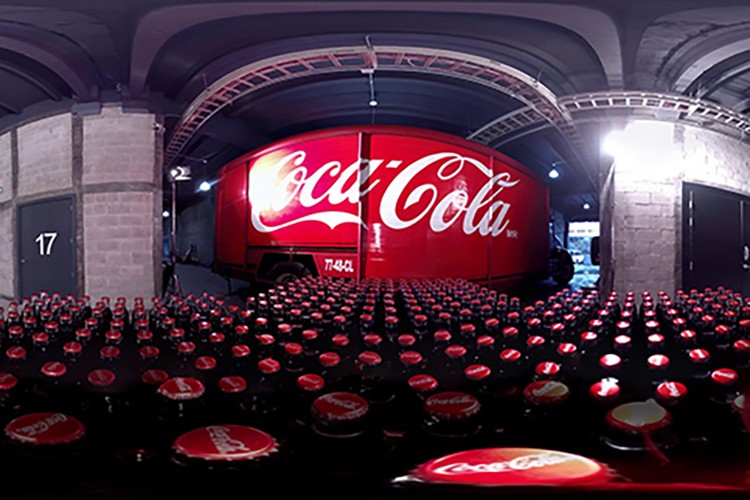
Virtual reality ads are not exactly prevalent yet, but platforms such as Oculus are already testing how they can be implemented. Until a platform-wide ad system is implemented, you can still add VR branded content and custom ads to your immersive app.
Virtual Reality Marketing Examples that Shine with Success
It’s quite amazing how diverse the market of VR experiences is nowadays, and we can see brands and businesses in many industries creating their own immersive apps for marketing purposes:
1. VR in automotive marketing
Aston Martin recently chose to market their new luxury sedan (the DBX model) via a VR app for Varjo headsets. The app allows users to see the exterior and interior of the vehicle in great detail and under the best lighting.
2. VR in finance marketing
Bank of America is a big believer in immersive tech, and chose to promote its use in the banking sector through a custom-made app for Gear VR and Google Cardboard headsets. The app was made available to corporate investors and small businesses, and visualized relevant data and content on the topic.
3. VR in aerospace marketing
Due to the fact that they could no longer hold events during lockdown, aircraft manufacturer Embraer created their own event in virtual form. Their VR experience simulated what it is like to fly in their new airplane model “Profit Hunter”.
4. VR in healthcare marketing
TAITRA is a Taiwan-based medical organization known for hosting exhibitions and events with industry leaders and promising new healthcare companies. For their 2020 exhibition, users could attend in person or don their VR headset and check out over 700 unique medical products from various manufacturers.
5. VR in real estate marketing
There are plenty of good reasons why use VR in marketing real estate, and one advantage was demonstrated by Domotics. This real estate company offers virtual tours of homes and properties through VR, and has seen this strategy pay off with sales. On that note, similar virtual tours can be helpful for marketing via VR for interior design and construction.
6. VR in retail marketing
Magrabi is a Dubai-based eyewear company that wanted to give customers a more accessible way to engage with their products and services. And so, they chose to use a strategy of VR in retail. Program-Ace developed an application for Google Cardboard that featured a realistic and product-packed virtual storefront.
How to Launch Your Own VR Campaign to Boost Sales
Launching a VR campaign can revolutionize your marketing efforts, offering a unique and immersive experience that captures your audience's attention. A successful VR campaign not only engages but also significantly boosts sales. Here's how to effectively launch a VR campaign in today's market.
1. Understanding your audience
The first step in creating an impactful VR campaign is thoroughly understanding your target audience. This involves identifying specific demographics, their preferences, and behaviors. Tailoring the VR experience to meet these insights ensures a more engaging and relevant interaction for your audience.
2. Developing the VR content
Creating compelling VR content is central to the campaign. This process involves conceptualizing a clear, engaging narrative leveraging VR's immersive capabilities. Designing interactive elements within the VR environment encourages users to explore and engage more deeply. It's essential to ensure the content is high quality and relevant to maintain user interest and immersion.
3. Choosing the right technology
Selecting the right VR hardware and software is crucial. You need to choose headsets and accessories that are both user-friendly and within the budget of your target audience. The VR software should be capable of supporting the campaign's interactive and graphical demands.
4. Marketing and promotion
Effective promotion is key to the success of your VR campaign, involving teasing the campaign on social media and other marketing channels to generate interest. Collaborating with influencers can also broaden your reach and add credibility to your VR campaign.
- Tease the campaign. Use social media, email marketing, and other channels to give sneak peeks of the VR experience.
- Utilize influencers. Partner with influencers in your industry to help promote the VR campaign.
5. Launching the VR campaign
The launch of your VR campaign should be strategic. Start with a soft launch, releasing a beta version to gather feedback and make necessary adjustments. Follow this with a full launch, ensuring all technical aspects are polished, and the experience is user-friendly.
6. Post-launch analysis and feedback
After launching, it's important to collect and analyze feedback. This data helps understand how your audience is interacting with the VR experience and is crucial for making improvements in future campaigns.
- Gather user data. Analyze feedback and usage data to understand audience interaction.
- Iterate and improve. Use the feedback to refine and enhance the VR experience for future campaigns.
7. Key considerations for effective VR marketing
Creating an engaging narrative and connecting emotionally with the user is paramount in VR marketing. The story should be compelling and enhanced by VR's capabilities. Integrating VR with other marketing channels is essential for a cohesive strategy, ensuring consistent branding across all platforms.
8. Measuring success
In order to evaluate the effectiveness of your VR campaign, establish clear key performance indicators (KPIs). Analyze user engagement, time spent in the VR experience, and conversion rates to gauge the campaign's success.
Overall, launching a VR campaign is a forward-thinking strategy that can significantly enhance your marketing and sales efforts. By understanding your audience, creating immersive content, using the right technology, and effectively promoting your campaign, you can create a VR experience that captivates and motivates your audience. With careful planning and execution, VR becomes a powerful tool in your marketing arsenal, providing unique and memorable experiences that set your brand apart and drive sales.
Become a Winner by Partnering with a Pro VR Marketing Agency
Creating a VR application to promote your product or service is generally straightforward, but some companies need VR developers on their payroll to build it. This situation necessitates seeking external VR expertise or hiring skilled professionals who specialize in VR development, thereby ensuring the successful creation and implementation of a VR-based marketing strategy. This approach enables businesses to leverage VR's full potential in enhancing their product or service promotion.
Thankfully, this problem can be easily overcome by hiring a development company that provides this service. They should have all the specialists and experience needed to deliver an application custom-built to fit your needs.
Program-Ace is one of the leading companies in the field of immersive (VR/AR/MR) software development, and we will be happy to help you with your project. Our company is behind the previously mentioned Magrabi marketing experience, and numerous other immersive and promotional projects. You could say we have been working with VR technology since it first became commonly available.
You are welcome to learn more about us and our work, and send us a message when you are ready to discuss your VR marketing vision.
